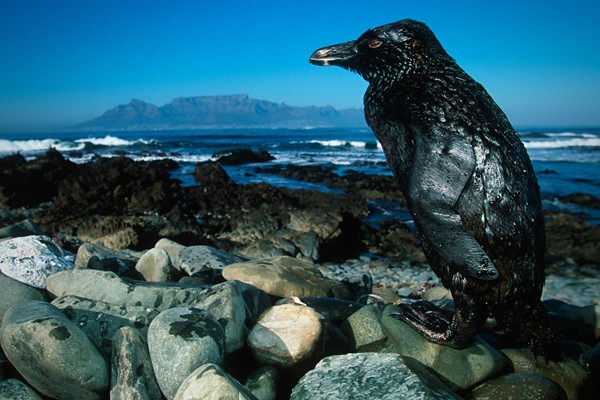Oil spills can have disastrous consequences for the environment and habitats: they can kill plants and animals, disrupt salinity or pH levels, and pollute air and water. As the need for oil expanded, refined products such as gasoline and diesel began to be used to power automobiles, ships, and other vehicles, resulting in the development of a global network of wells, ships, storage terminals, and pipelines. Extraction of oil from the ground and transportation to refineries and beyond periodically leaks oil into the environment due to old and damaged equipment, human failure, and poor luck. The worst disasters have released tens of millions of gallons of oil, polluting fisheries, killing and injuring wildlife, and causing a loss of tourism money.
Here are the top 10 largest oil spill disasters in the world.
- Gulf War oil spill: 1,360,000 -1,500,000 tons
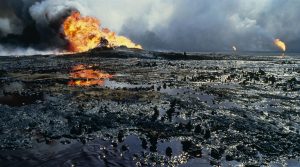 It was not an accident that the world’s largest oil spill occurred. It was the outcome of a conflict. During the Gulf War in 1991, as Iraqi forces withdrew from Kuwait, they unlocked pipelines and oil well valves and set fire to them in order to prevent US soldiers from landing in the area. The fire began after the first well was opened in January 1991 and lasted until the last well was capped in April of that year. As a result, it’s estimated that 240 million gallons of oil were spilled into the Persian Gulf, killing hundreds of fish and marine mammals.
It was not an accident that the world’s largest oil spill occurred. It was the outcome of a conflict. During the Gulf War in 1991, as Iraqi forces withdrew from Kuwait, they unlocked pipelines and oil well valves and set fire to them in order to prevent US soldiers from landing in the area. The fire began after the first well was opened in January 1991 and lasted until the last well was capped in April of that year. As a result, it’s estimated that 240 million gallons of oil were spilled into the Persian Gulf, killing hundreds of fish and marine mammals.
- Ixtoc I oil well: 454,000 tons
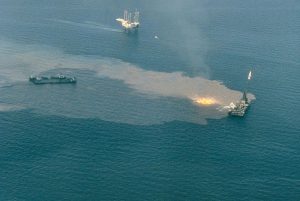 Between June 1979 and March 1980, the Ixtoc 1 oil spill in Mexico discharged up to 140 million gallons of crude oil into the Bay of Campeche. Some sources consider the Ixtoc 1 catastrophe as the second-worst oil leak of all time, owing to the uncertainty around how much oil was released during the Deepwater Horizon disaster. An explosion aboard the Ixtoc 1 platform, which was drilling exploration wells in 164 feet (approximately 50 meters) of water, started the spill. The explosion was caused by a buildup of oil and gas in the pipe due to a failure of the drilling mud to circulate. A slurry of mud, oil, and natural gas rushed up the pipe and bypassed the blowout preventer, which failed to work when workers attempted to remove the drill so that material could flow back down the line and fill the hole. The gases ignited when they came into touch with spinning motors on the surface. Over the next nine months, between 126 million and 140 million gallons of oil were released into the southern Gulf of Mexico, with some of it washing up on beaches from the western Yucatan Peninsula to southern Texas, resulting in hundreds of millions of dollars in lost tourism revenue and a five-year reduction in commercial fishing in the region.
Between June 1979 and March 1980, the Ixtoc 1 oil spill in Mexico discharged up to 140 million gallons of crude oil into the Bay of Campeche. Some sources consider the Ixtoc 1 catastrophe as the second-worst oil leak of all time, owing to the uncertainty around how much oil was released during the Deepwater Horizon disaster. An explosion aboard the Ixtoc 1 platform, which was drilling exploration wells in 164 feet (approximately 50 meters) of water, started the spill. The explosion was caused by a buildup of oil and gas in the pipe due to a failure of the drilling mud to circulate. A slurry of mud, oil, and natural gas rushed up the pipe and bypassed the blowout preventer, which failed to work when workers attempted to remove the drill so that material could flow back down the line and fill the hole. The gases ignited when they came into touch with spinning motors on the surface. Over the next nine months, between 126 million and 140 million gallons of oil were released into the southern Gulf of Mexico, with some of it washing up on beaches from the western Yucatan Peninsula to southern Texas, resulting in hundreds of millions of dollars in lost tourism revenue and a five-year reduction in commercial fishing in the region.
- Atlantic Empress/Aegean Captain: 287,000 tons
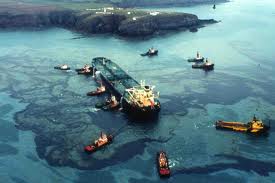 The Atlantic Empress spilled an estimated 90 million gallons of oil into the Atlantic Ocean 16 kilometers (10 miles) off the coast of Trinidad & Tobago. The Atlantic Empress and Aegean Captain collided on July 19, 1979, during a tropical storm, resulting in the world’s greatest tanker spill. Both ships caught fire, igniting an oil slick, although the Atlantic Empress was the one who took the brunt of the accident. The Atlantic Empress has pulled away from the coast and set fire to itself for two weeks before sinking. The fire aboard the Aegean Captain, on the other hand, was put out and the ship was towed to Trinidad. Despite the massive amount of oil leaked during the disaster, the spill had little impact on the ecology on adjacent islands’ beaches; winds blew most of the oil out to sea, where it dispersed. During the catastrophe, however, 27 seamen died.
The Atlantic Empress spilled an estimated 90 million gallons of oil into the Atlantic Ocean 16 kilometers (10 miles) off the coast of Trinidad & Tobago. The Atlantic Empress and Aegean Captain collided on July 19, 1979, during a tropical storm, resulting in the world’s greatest tanker spill. Both ships caught fire, igniting an oil slick, although the Atlantic Empress was the one who took the brunt of the accident. The Atlantic Empress has pulled away from the coast and set fire to itself for two weeks before sinking. The fire aboard the Aegean Captain, on the other hand, was put out and the ship was towed to Trinidad. Despite the massive amount of oil leaked during the disaster, the spill had little impact on the ecology on adjacent islands’ beaches; winds blew most of the oil out to sea, where it dispersed. During the catastrophe, however, 27 seamen died.
- Fergana Valley: 285,000 tons
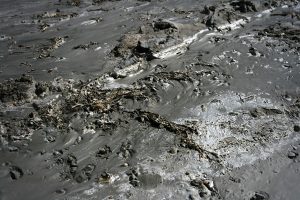 Uzbekistan saw the world’s largest land-based oil leak, as well as Asia’s worst on March 2, 1992. Oil poured into the valley near Fergana as a well blew up. Before the well pressure decreased, the oil caught fire and burnt for two months. More than 88 million gallons were safeguarded from the fire behind berms and dikes of the estimated 88 million gallons discharged.
Uzbekistan saw the world’s largest land-based oil leak, as well as Asia’s worst on March 2, 1992. Oil poured into the valley near Fergana as a well blew up. Before the well pressure decreased, the oil caught fire and burnt for two months. More than 88 million gallons were safeguarded from the fire behind berms and dikes of the estimated 88 million gallons discharged.
- Nowruz oil field: 260,000 tons
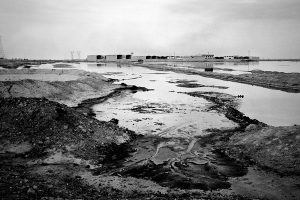 A tanker collided with an Iranian oil rig above the Nowruz oil field in the northern Persian Gulf on February 10, 1983. The hit caused the platform to list 45 degrees, allowing corrosion and wave energy to topple it and destroy the wellhead. Before it was successfully covered in September 1983, the well was leaking around 1,500 barrels (63,000 gallons) of oil per day into the Persian Gulf. During the Iran-Iraq Battle in the early 1980s, the northern Persian Gulf was a contested war zone, and a nearby platform was assaulted by Iraqi helicopters only a month after the tanker crash. Before it was plugged more than two years later, the damage to the second platform leaked 733,000 barrels (approximately 31 million gallons) of oil into the gulf. The Iraqis opened fire on Iran’s capping and repair work, and approximately 20 people were killed. These two disasters are estimated to have spilled over 80 million gallons of oil. Some of the oil was cleaned up with skimmers and other equipment, but an estimated two-thirds of the entire volume ended up on the seafloor as tar balls when sand mingled with floating oil at the surface.
A tanker collided with an Iranian oil rig above the Nowruz oil field in the northern Persian Gulf on February 10, 1983. The hit caused the platform to list 45 degrees, allowing corrosion and wave energy to topple it and destroy the wellhead. Before it was successfully covered in September 1983, the well was leaking around 1,500 barrels (63,000 gallons) of oil per day into the Persian Gulf. During the Iran-Iraq Battle in the early 1980s, the northern Persian Gulf was a contested war zone, and a nearby platform was assaulted by Iraqi helicopters only a month after the tanker crash. Before it was plugged more than two years later, the damage to the second platform leaked 733,000 barrels (approximately 31 million gallons) of oil into the gulf. The Iraqis opened fire on Iran’s capping and repair work, and approximately 20 people were killed. These two disasters are estimated to have spilled over 80 million gallons of oil. Some of the oil was cleaned up with skimmers and other equipment, but an estimated two-thirds of the entire volume ended up on the seafloor as tar balls when sand mingled with floating oil at the surface.
- ABT Summer: 260,000 tons
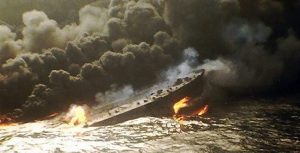 An oil tanker named ABT Summer exploded and caught fire on May 28, 1991, about 700 nautical miles off the coast of Angola, spilling around 51 million gallons of oil into the sea. The incident resulted in an oil slick that covered approximately 80 square miles. For the next three days, the tanker burned until it capsized, killing five of the vessel’s 32 crew members. More information regarding the explosion is unavailable because a significant rescue operation was not launched right away, owing to the fact that the oil leak occurred at sea. However, because the catastrophe occurred on the high seas, the majority of the oil that escaped from the ship is thought to have been contained.
An oil tanker named ABT Summer exploded and caught fire on May 28, 1991, about 700 nautical miles off the coast of Angola, spilling around 51 million gallons of oil into the sea. The incident resulted in an oil slick that covered approximately 80 square miles. For the next three days, the tanker burned until it capsized, killing five of the vessel’s 32 crew members. More information regarding the explosion is unavailable because a significant rescue operation was not launched right away, owing to the fact that the oil leak occurred at sea. However, because the catastrophe occurred on the high seas, the majority of the oil that escaped from the ship is thought to have been contained.
- Castillo de Bellver: 252,000 tons
 In August 1983, a fire aboard the oil tanker Castillo de Bellver caused the tanker to capsize. The Castillo de Bellver was located in the South Atlantic Ocean, around 70 miles from Cape Town, South Africa, when the fire broke out on August 6. The tanker sank in deep sea after drifting and breaking into two pieces. The stern half, which contained 110,000 tons of oil, traveled to within 24 miles of the coast before sinking. Engineers used explosives to sink the tanker’s forward section after it was hauled away from the coast. Although some of the oil slick burned during the fire, the majority of the oil spilled on the surface was captured in the Benguela Current and taken out to sea before it dispersed, resulting in minimal environmental harm. The tanker’s cargo is estimated to be 53.5 million gallons of crude oil, according to some estimates. However, numerous accounts claim that when the fire occurred, the tanker was carrying 79 million gallons of crude oil.
In August 1983, a fire aboard the oil tanker Castillo de Bellver caused the tanker to capsize. The Castillo de Bellver was located in the South Atlantic Ocean, around 70 miles from Cape Town, South Africa, when the fire broke out on August 6. The tanker sank in deep sea after drifting and breaking into two pieces. The stern half, which contained 110,000 tons of oil, traveled to within 24 miles of the coast before sinking. Engineers used explosives to sink the tanker’s forward section after it was hauled away from the coast. Although some of the oil slick burned during the fire, the majority of the oil spilled on the surface was captured in the Benguela Current and taken out to sea before it dispersed, resulting in minimal environmental harm. The tanker’s cargo is estimated to be 53.5 million gallons of crude oil, according to some estimates. However, numerous accounts claim that when the fire occurred, the tanker was carrying 79 million gallons of crude oil.
- The Amoco Cadiz (223,000 tons)
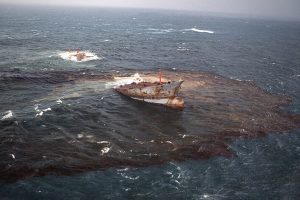 On March 16, 1978, the Amoco Cadiz, a very large crude carrier (VLCC) carrying roughly 69 million gallons of light crude oil, ran aground on shallow rocks off the coast of Brittany, France. A huge wave damaged the ship’s rudder and hydraulic system while it was sailing the heavy seas of the English Channel. Towlines were attempted to be secured to the Cadiz by rescue tugs, but sea conditions made the task impossible. Only a few hours after being secured, the first of the towlines broke. The Cadiz had been forced toward the Brittany coast by winds and waves by the time a second rope could be attached, and the stern and midsection had cut shallow underwater rocks. The impact ripped holes in the hull and container tanks, allowing the oil to escape. The oil slick fouled around 200 miles (321 kilometers) of French shore, killing millions of invertebrates such as mollusks and crabs, as well as an estimated 20,000 birds, and contaminating oyster beds in the area. The Cadiz’s owners, Amoco Corporation, agreed to pay $120 million to French claims in 1990, as well as an additional $35 million to Royal Dutch Shell, who had held the lost oil.
On March 16, 1978, the Amoco Cadiz, a very large crude carrier (VLCC) carrying roughly 69 million gallons of light crude oil, ran aground on shallow rocks off the coast of Brittany, France. A huge wave damaged the ship’s rudder and hydraulic system while it was sailing the heavy seas of the English Channel. Towlines were attempted to be secured to the Cadiz by rescue tugs, but sea conditions made the task impossible. Only a few hours after being secured, the first of the towlines broke. The Cadiz had been forced toward the Brittany coast by winds and waves by the time a second rope could be attached, and the stern and midsection had cut shallow underwater rocks. The impact ripped holes in the hull and container tanks, allowing the oil to escape. The oil slick fouled around 200 miles (321 kilometers) of French shore, killing millions of invertebrates such as mollusks and crabs, as well as an estimated 20,000 birds, and contaminating oyster beds in the area. The Cadiz’s owners, Amoco Corporation, agreed to pay $120 million to French claims in 1990, as well as an additional $35 million to Royal Dutch Shell, who had held the lost oil.
- The Haven (145,000 tons)
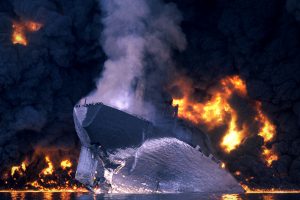 In April 1991, a severe explosion on board the Cyprus-based tanker Haven killed six crew members and spilled 145,000 tons of oil off the coast of Italy. In the ensuing fire, almost 70% of the oil was consumed. Most oil spills stay on the surface of the sea, but some of it sank in this one. Oil from the Haven was eventually discovered at depths of up to 1,640 feet in ocean beds (500 meters).
In April 1991, a severe explosion on board the Cyprus-based tanker Haven killed six crew members and spilled 145,000 tons of oil off the coast of Italy. In the ensuing fire, almost 70% of the oil was consumed. Most oil spills stay on the surface of the sea, but some of it sank in this one. Oil from the Haven was eventually discovered at depths of up to 1,640 feet in ocean beds (500 meters).
- The Odyssey (132,000 tons)
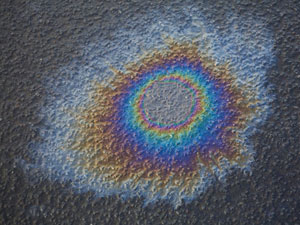 The Odyssey, an American-owned oil tanker, split in two 700 miles off the coast of Nova Scotia in November 1988. The ship spilled roughly 132,000 tons of crude oil into the sea, and as it sank, it caught fire, igniting the spill. The Canadian Coast Guard was unable to reach the spill immediately due to adverse weather conditions, and much of the oil burnt. The oil leak covered an area of 4.8 km x 16 km, with only a little amount of oil reaching the beach. Furthermore, all 27 members of the Odyssey’s crew are believed to have perished in the tragedy.
The Odyssey, an American-owned oil tanker, split in two 700 miles off the coast of Nova Scotia in November 1988. The ship spilled roughly 132,000 tons of crude oil into the sea, and as it sank, it caught fire, igniting the spill. The Canadian Coast Guard was unable to reach the spill immediately due to adverse weather conditions, and much of the oil burnt. The oil leak covered an area of 4.8 km x 16 km, with only a little amount of oil reaching the beach. Furthermore, all 27 members of the Odyssey’s crew are believed to have perished in the tragedy.
While huge spills attract the most of the attention, a number of smaller and more frequent occurrences happen from time to time. And it takes a month of oil-cleaning activities to restore normalcy to the areas affected by the incident.

